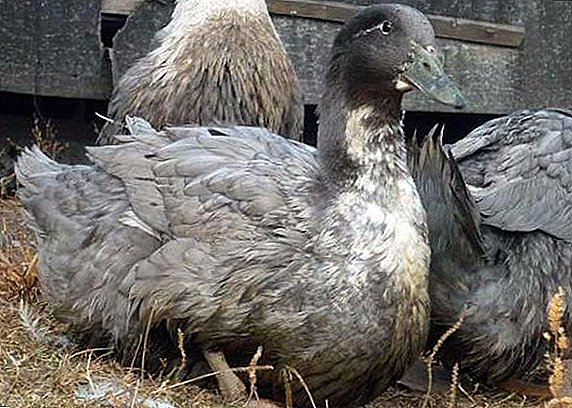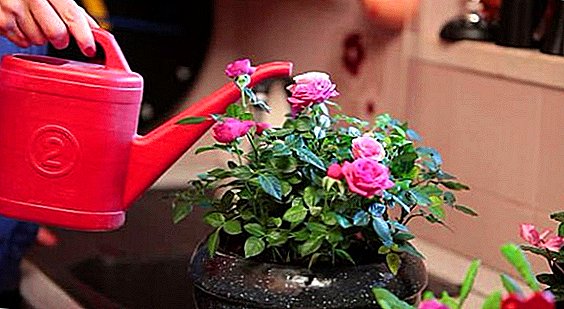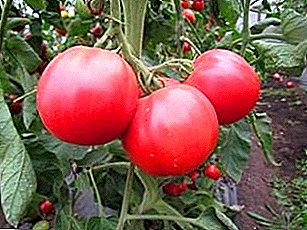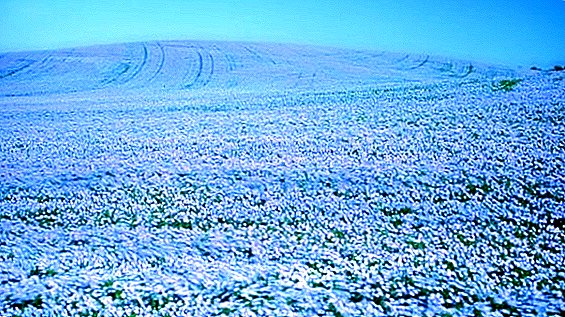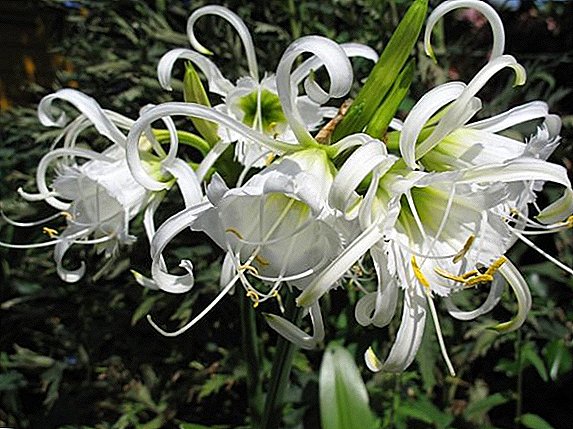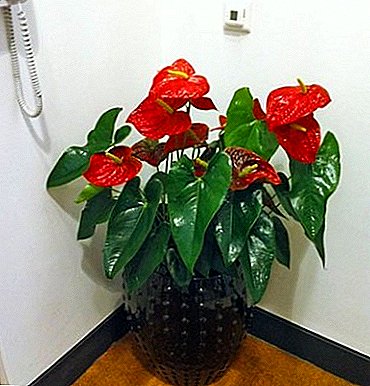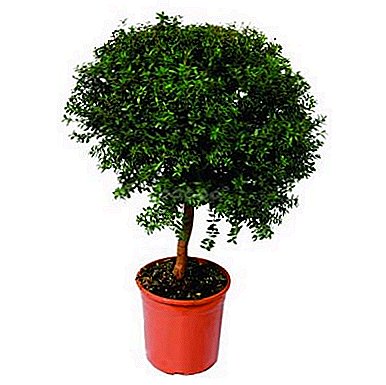
Myrtle communis or ordinary - common evergreen plant. It is very popular among gardeners and lovers of indoor plants, it is often found among bonsai lovers.
The homeland of myrtle is the Mediterranean countries - Southern Europe and North Africa.
general description
 Under natural conditions, the Myrtle communis usually grows up to 3-5 meters in height. In apartments, this flower has a height of 50-60 centimeters, occasionally it can grow up to 1 meter.
Under natural conditions, the Myrtle communis usually grows up to 3-5 meters in height. In apartments, this flower has a height of 50-60 centimeters, occasionally it can grow up to 1 meter.
The plant is a tree with solid dense leaves up to 5 centimeters long, from which essential oils are obtained. The latter are widely used in the perfume industry and medicine.
Myrtle is popular for interior design in apartments and offices, creating a landscape on private plots. It grows slowly, relative to other indoor plants - under favorable conditions, its annual growth may be as little as 10-15 centimeters.
It tolerates pruning, so too overgrown flowers can be cut, including to give the crown the desired shape.
Myrtle communis has healing properties. Essential couples can kill up to 80% of microbes in the room, including those that cause sore throat and tuberculosis. It is actively used in homeopathy.
A photo
You can visually familiarize yourself with the flower "Myrt Communis" in the photo below:




Home care
Myrtle communis does not require care at home. The flower is demanding in terms of creating optimal conditions for it, and may not forgive the owner for forgotten watering, the lack of top dressing or too dry air.
Features care after purchase
Myrtle is very sensitive to conditions during the adaptation period. So, a flower often sheds leaves after purchase, due to the change of greenhouse conditions to indoor. In this case, it is recommended to spray it with succinic acid or Epin, and temporarily place it under the bag.
Next, the plant must be ventilated every day (to avoid drafts!), To ensure the flow of diffused bright light. During the adaptation period, try not to change either the lighting, or the irrigation mode, or the frequency of spraying.
Lighting
For the successful development of myrtle ordinary, it is necessary to ensure the arrival of a large amount of diffused light. The short-term exposure to direct rays he will endure without problems but having a pot on the south side of the apartment you need to think about additional protection in the summer.
ATTENTION! The optimal location of the myrtle is on the west or east side. There he will receive a sufficient amount of light without the risk of burns. You can put it on the north window, but it can affect the quality of flowering.
By the flower, you can immediately determine the lack of light - its twigs will be thin, the leaves will be small, sparse and acquire a light green hue. When transferring a myrtle from a dark zone to a more illuminated one, it is impossible to do this abruptly - it must be gradually accustomed to an increased amount of light.
Temperature
 For growth during the summer period a moderate temperature is needed - within + 18-20 degrees. But in winter, on the contrary, it is desirable for myrtle to provide a temperature of + 6-8 degrees. In this case, in the summer it will bloom profusely and beautifully.
For growth during the summer period a moderate temperature is needed - within + 18-20 degrees. But in winter, on the contrary, it is desirable for myrtle to provide a temperature of + 6-8 degrees. In this case, in the summer it will bloom profusely and beautifully.
If the owner does not have the opportunity to create such conditions for the wintering period, the plant may well spend this time in a normal room, but then it must be carefully watered and sprayed.
Without it in winter, the flower is likely to lose all the leaves, but it is not dangerous. It is important to continue watering and in the spring it will turn green again, although it will not bloom this year.
Air humidity
Myrtle communis loves moisture, and therefore from spring to autumn it must be constantly sprayed. In winter, when the temperature of the room is observed, it is not required.
Watering
It is necessary to produce only separated water, do not use chlorinated or hard. During the period from spring to autumn, abundant watering is done when the topsoil dries out. In winter, under the conditions of temperature (+ 6-8 degrees) - watering is rare, limited, otherwise - careful. We can not allow the transformation of the earth in a dry room, but if this happened, it is recommended to immerse the pot in the water entirely.
Also excessive watering and stagnation of water in the pot is harmful for myrtle - This can lead to rotting of the root system, the defeat of its bacteria and fungus. After watering the water from the pan must be drained.
ATTENTION! A good landmark in the need for watering - the tips of the branches. At that moment, when the earth begins to dry out, they sink down. If you miss watering, then the twigs finally wilted and the plant will throw off the leaves.
Bloom
 Myrtle blooms with fragrant white flowers that appear at the beginning of summer. The intensity of flowering may be reduced by unfavorable wintering conditions, excessive cutting of young plants. Grown from seed, he begins to bloom from 3-5 years of age.
Myrtle blooms with fragrant white flowers that appear at the beginning of summer. The intensity of flowering may be reduced by unfavorable wintering conditions, excessive cutting of young plants. Grown from seed, he begins to bloom from 3-5 years of age.
Pollination can be made with a brush. If the procedure was successful, then the fall appears dark blue juicy berries. When ripening, seeds can be obtained from them, which are further used for reproduction.
Fertilizers (dressing)
To stimulate growth, you can feed in the period from spring to autumn, with a frequency of once every two weeks. It uses organic or mineral fertilizers. It is not necessary to feed in the winter. It is not advisable to use a mixture containing lime. After transplanting fertilization should be suspended for 1-1.5 months.
Transfer
The best time for this is early spring, before the beginning of the flowering period. Young plants need to be replanted every year. choosing a pot 2-3 centimeters more than the previous one. It is important during the operation not to bury the base of the trunk in the ground. In the future, you can carry out the procedure once every 2-3 years, changing the upper and lower layers of the soil, filling up fresh drainage. The optimal composition of the soil - on one part of peat, humus and sand, and two parts of sod land.
ATTENTION! For drainage it is best to use expanded clay or washed pebbles. In no case can polyfoam be used for these purposes - it is compacted under the pressure of the soil, preventing it from breathing, which leads to acidification and rotting of the roots.
Landing
It is carried out with the help of seeds and processes. Seeds are sown over the ground, after which it is poured over it with a thin layer. Germination of myrtle seeds occurs 1-2 weeks after sowing.
Planting cuttings can be carried out at any time of the year. To do this, take semi-woody cuttings of 5-8 centimeters in size, the cut is processed by the root stimulator.
Growing up
 After planting the seeds, the pot is covered with a film or glass, periodically aired and maintained at a temperature of about +19 degrees. After the emergence of 1-2 leaves on the seedlings, they can be seated in individual pots. Flowering begins in 5 years.
After planting the seeds, the pot is covered with a film or glass, periodically aired and maintained at a temperature of about +19 degrees. After the emergence of 1-2 leaves on the seedlings, they can be seated in individual pots. Flowering begins in 5 years.
If the cuttings are planted in a pot, it is covered with a film or glass, and placed in a temperature of + 18-20 degrees. Rooted stalk for 3-4 weeks. After that, young plants can be planted in separate pots measuring 7 centimeters. When the roots have filled the entire container, they are rolled into a new large pot.
Diseases and pests
Myrtle can not be called too picky, yet it is sensitive to air temperature, humidity and light. If this is violated, the following problems may occur:
- leaves turn yellow, begin to curl - the flower gets sunburns, it is necessary to protect from direct rays or move to a more shaded place;
- leaves are small, pale color - lighting is not enough, you need to move it closer to the light;
- the plant has thrown off the leaves - This is myrtle’s standard defensive response to adverse conditions. These may include lack of light, high air temperature, lack of watering.
With a strong overflow, rotting of the stem base and root system begins, a fungal disease occurs. Unfortunately, in this case, curing the myrtle is almost impossible and it dies.
Due to the violation of conditions, some types of pests can appear - a spider mite, whitefly, scythe or aphid. All of them, except for the scythe, are treated by rinsing with running water and treatment with insecticides.
In the case of the shield, it is necessary to find the unaffected processes, and use them for grafting. The rest of the flower will have to be destroyed.
Myrtle - A beautiful evergreen plant that can be used to grow bonsai. It does not require excessive effort in the content, however, can not forgive the forgotten watering.


